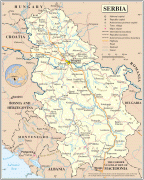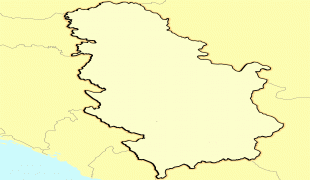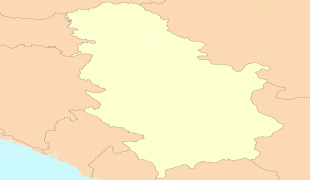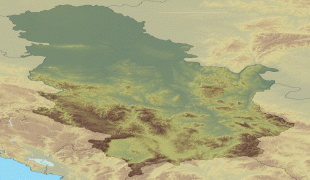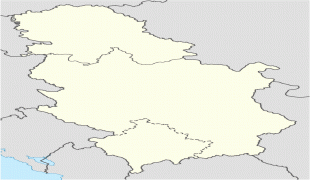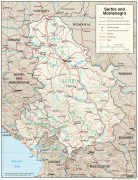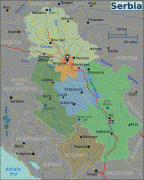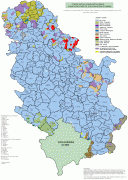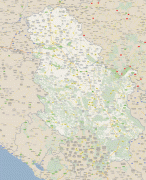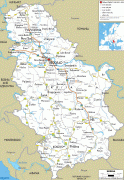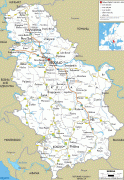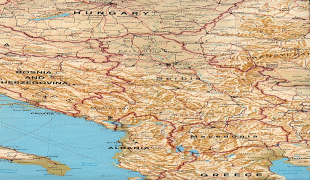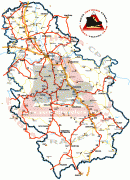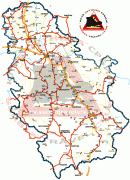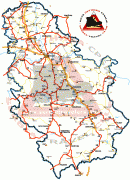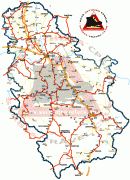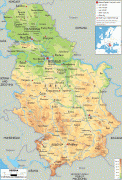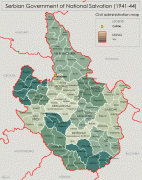Serbia
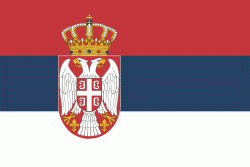 |
 |
| Flag of Serbia | |
Continuously inhabited since the Paleolithic Age, the territory of modern-day Serbia faced Slavic migrations in the 6th century, establishing several regional states in the early Middle Ages at times recognised as tributaries to the Byzantine, Frankish and Hungarian kingdoms. The Serbian Kingdom obtained recognition by the Holy See and Constantinople in 1217, reaching its territorial apex in 1346 as the Serbian Empire. By the mid-16th century, the Ottomans annexed the entirety of modern-day Serbia; their rule was at times interrupted by the Habsburg Empire, which began expanding towards Central Serbia from the end of the 17th century while maintaining a foothold in Vojvodina. In the early 19th century, the Serbian Revolution established the nation-state as the region's first constitutional monarchy, which subsequently expanded its territory. Following casualties in World War I, and the subsequent unification of the former Habsburg crownland of Vojvodina with Serbia, the country co-founded Yugoslavia with other South Slavic nations, which would exist in various political formations until the Yugoslav Wars of the 1990s. During the breakup of Yugoslavia, Serbia formed a union with Montenegro, which was peacefully dissolved in 2006, restoring Serbia's independence as a sovereign state for the first time since 1918. In 2008, representatives of the Assembly of Kosovo unilaterally declared independence, with mixed responses from the international community while Serbia continues to claim it as part of its own sovereign territory.
Serbia is an upper-middle income economy, ranked "very high" in the Human Development Index domain (63rd position). It is a unitary parliamentary constitutional republic, member of the UN, CoE, OSCE, PfP, BSEC, CEFTA, and is acceding to the WTO. Since 2014, the country has been negotiating its EU accession, with the aim of joining the European Union by 2025. Serbia formally adheres to the policy of military neutrality. The country provides universal health care and free primary and secondary education to its citizens.
The origin of the name Serbia is unclear. Historically, authors have mentioned the Serbs (Srbi / Срби) and the Sorbs of Eastern Germany (Upper Sorbian: Serbja; Lower Sorbian: Serby) in a variety of ways: Cervetiis (Servetiis), gentis , Suurbi, Sorabi, Soraborum, Sorabos, Surpe, Sorabici, Sorabiet, Sarbin, Swrbjn, Servians, Sorbi, Sirbia, Sribia, Zirbia, Zribia, Suurbelant, Surbia, Serbulia / Sorbulia among others. These authors used these names to refer to Serbs and Sorbs in areas where their historical and current presence is not disputable (notably in the Balkans and Lusatia). However, there are also sources that mention the same or similar names in other parts of the World (most notably in the Asiatic Sarmatia in the Caucasus).
There exist two prevailing theories on the origin of the ethnonym *Sŕbъ (plur. *Sŕby), one from a Proto-Slavic language with an appellative meaning of a "family kinship" and "alliance", while another from an Iranian-Sarmatian language with various meanings. In his work, De Administrando Imperio, Constantine VII Porphyrogenitus suggests that the Serbs originated from White Serbia near Francia. According to the recorded tradition the White Serbs split in two, with the half that became known as the Serbs coming down to settle Byzantine land.
From 1815 to 1882, the official name for Serbia was the Principality of Serbia. From 1882 to 1918, it was renamed to the Kingdom of Serbia, later from 1945 to 1963, the official name for Serbia was the People's Republic of Serbia. This was again renamed the Socialist Republic of Serbia from 1963 to 1990. Since 1990, the official name of the country has been the Republic of Serbia.
Currency / Language
| ISO | Currency | Symbol | Significant figures |
|---|---|---|---|
| RSD | Serbian dinar | дин or din. | 2 |
| ISO | Language |
|---|---|
| BS | Bosnian language |
| HU | Hungarian language |
| SR | Serbian language |






